This Endless Sea
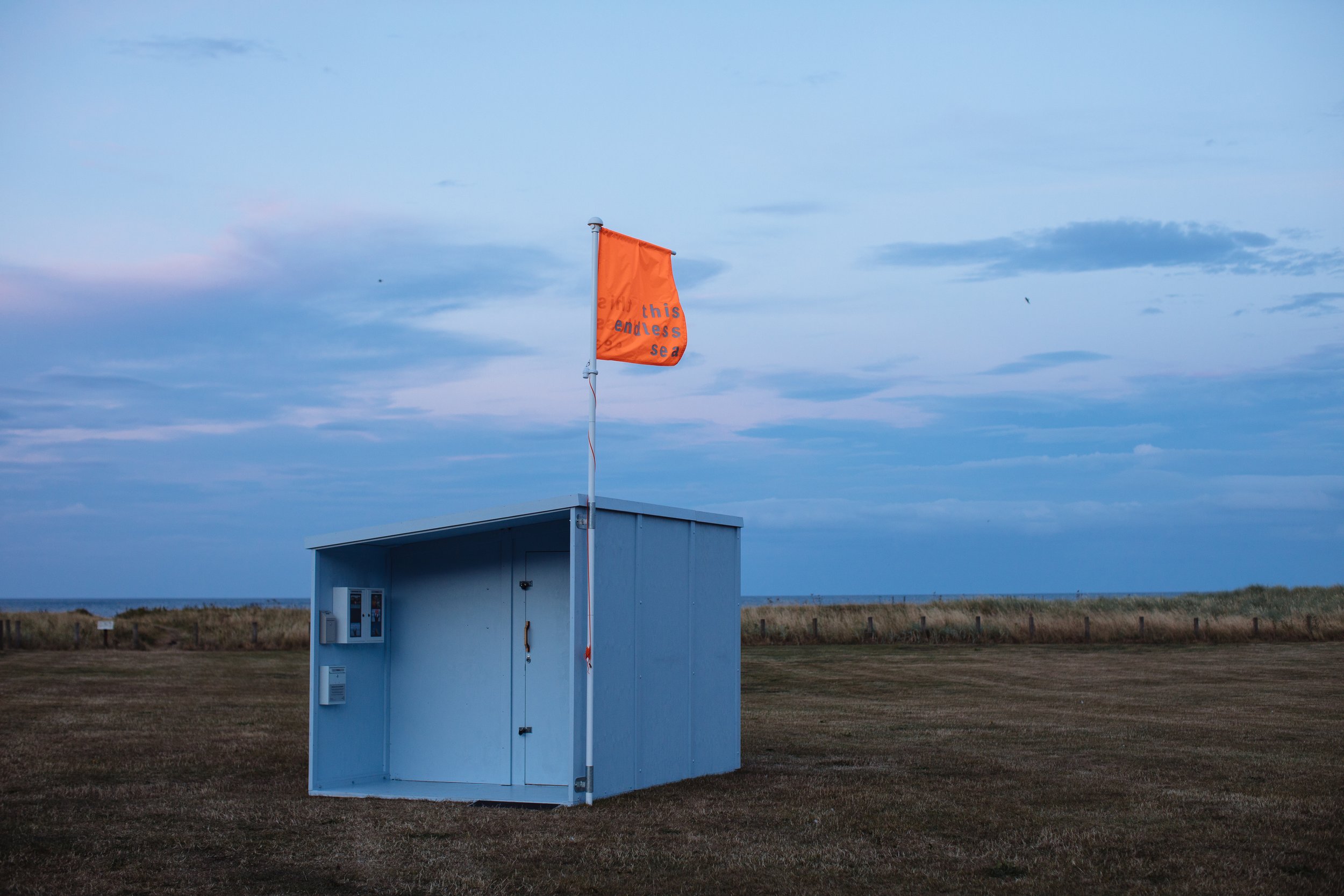
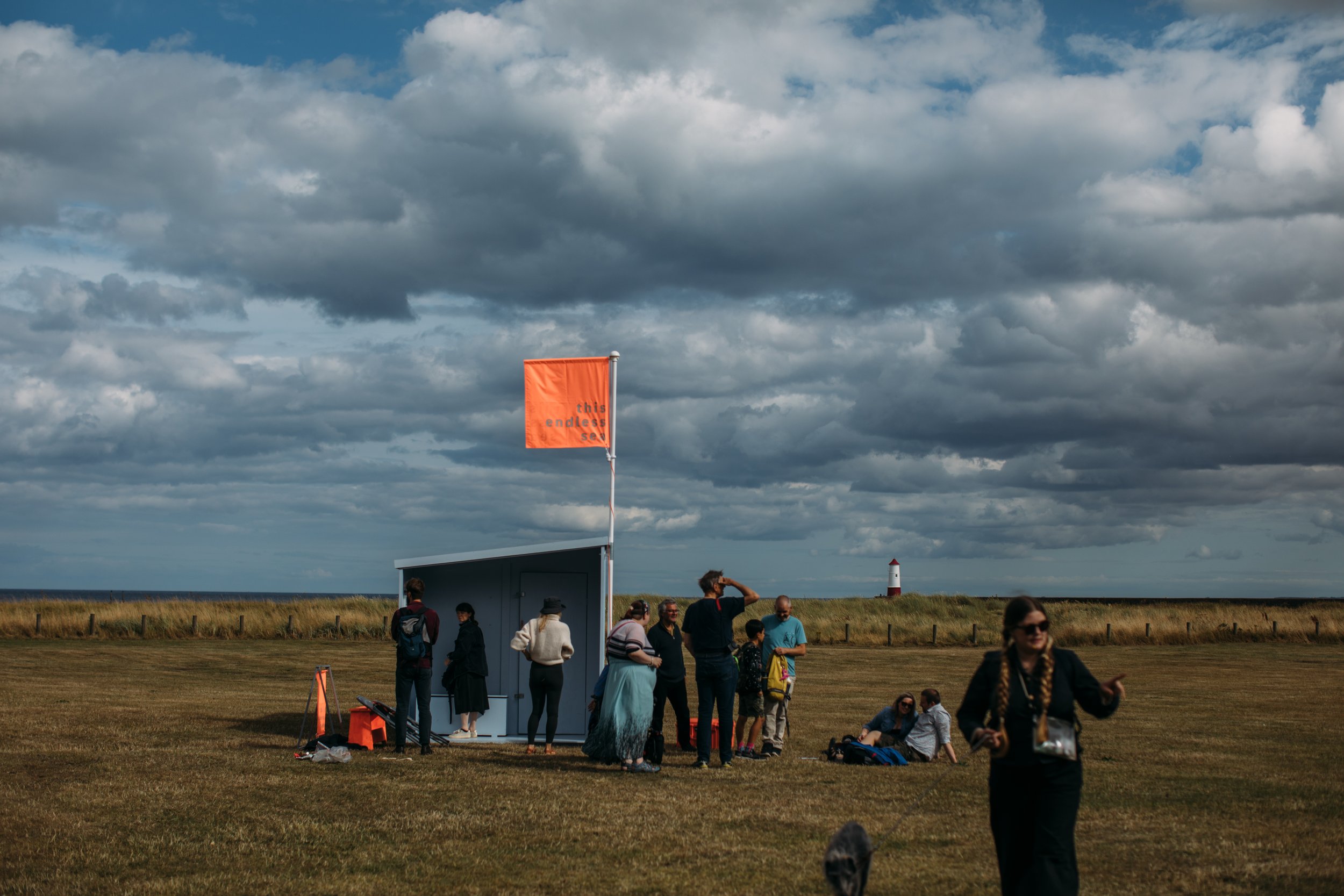
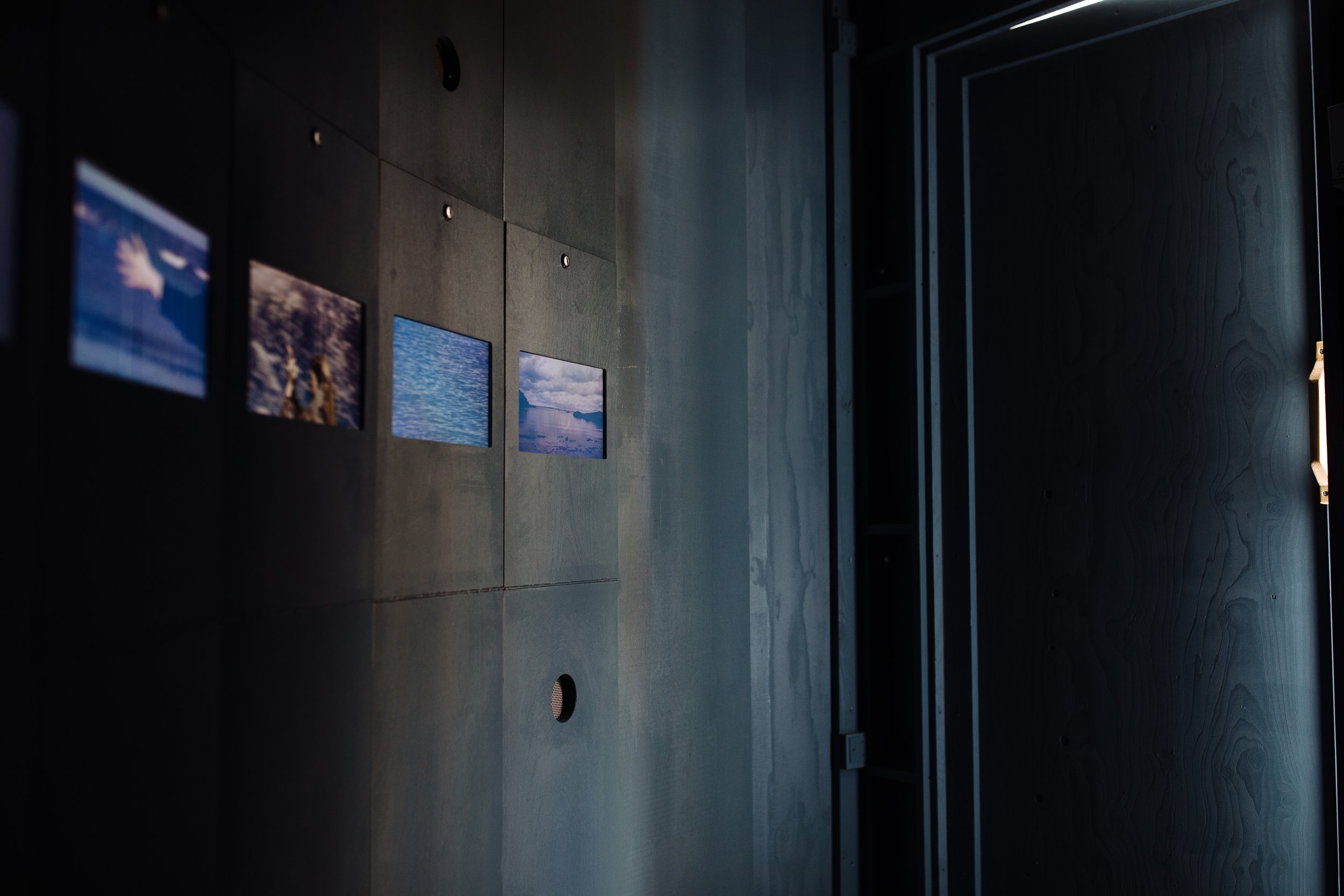
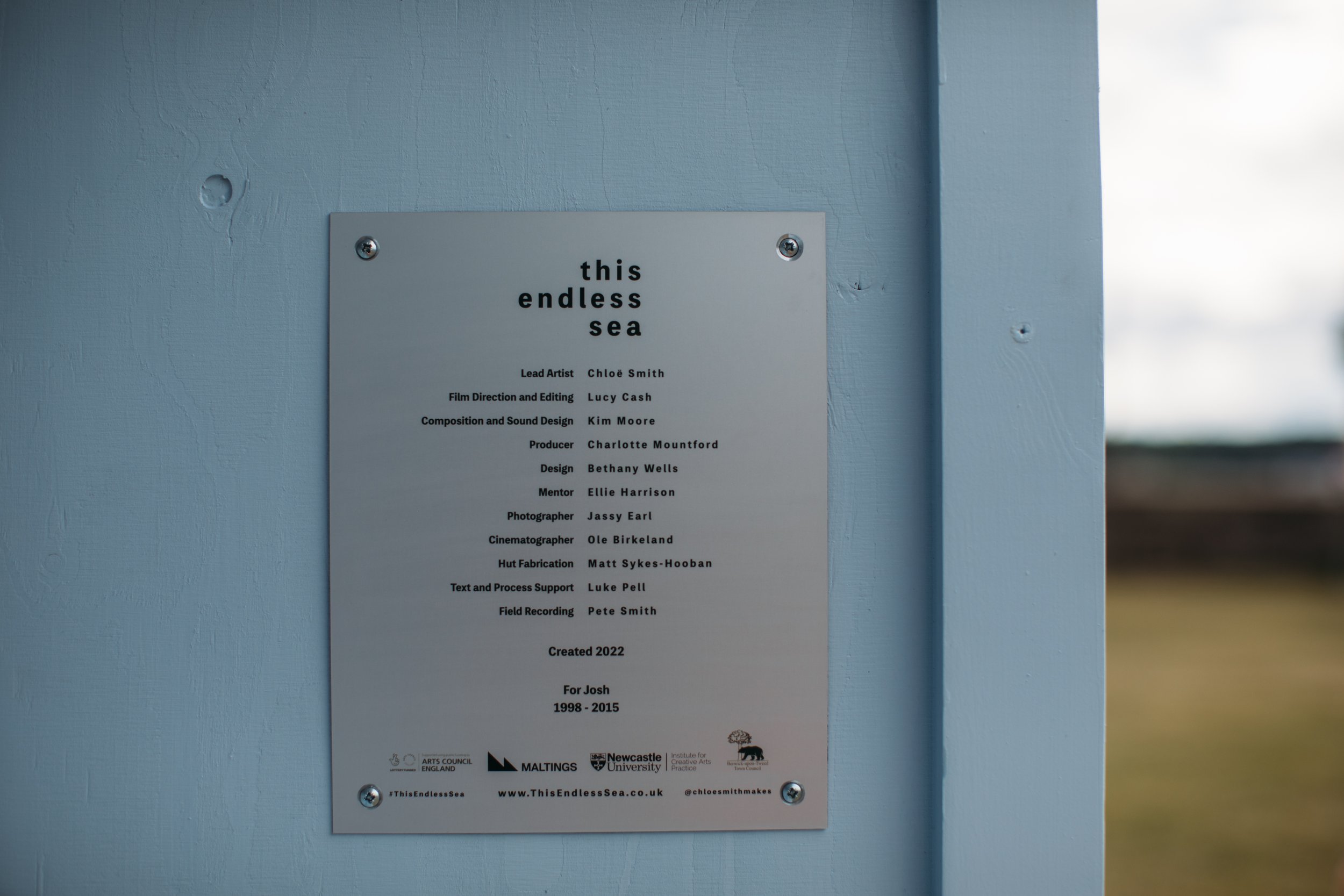
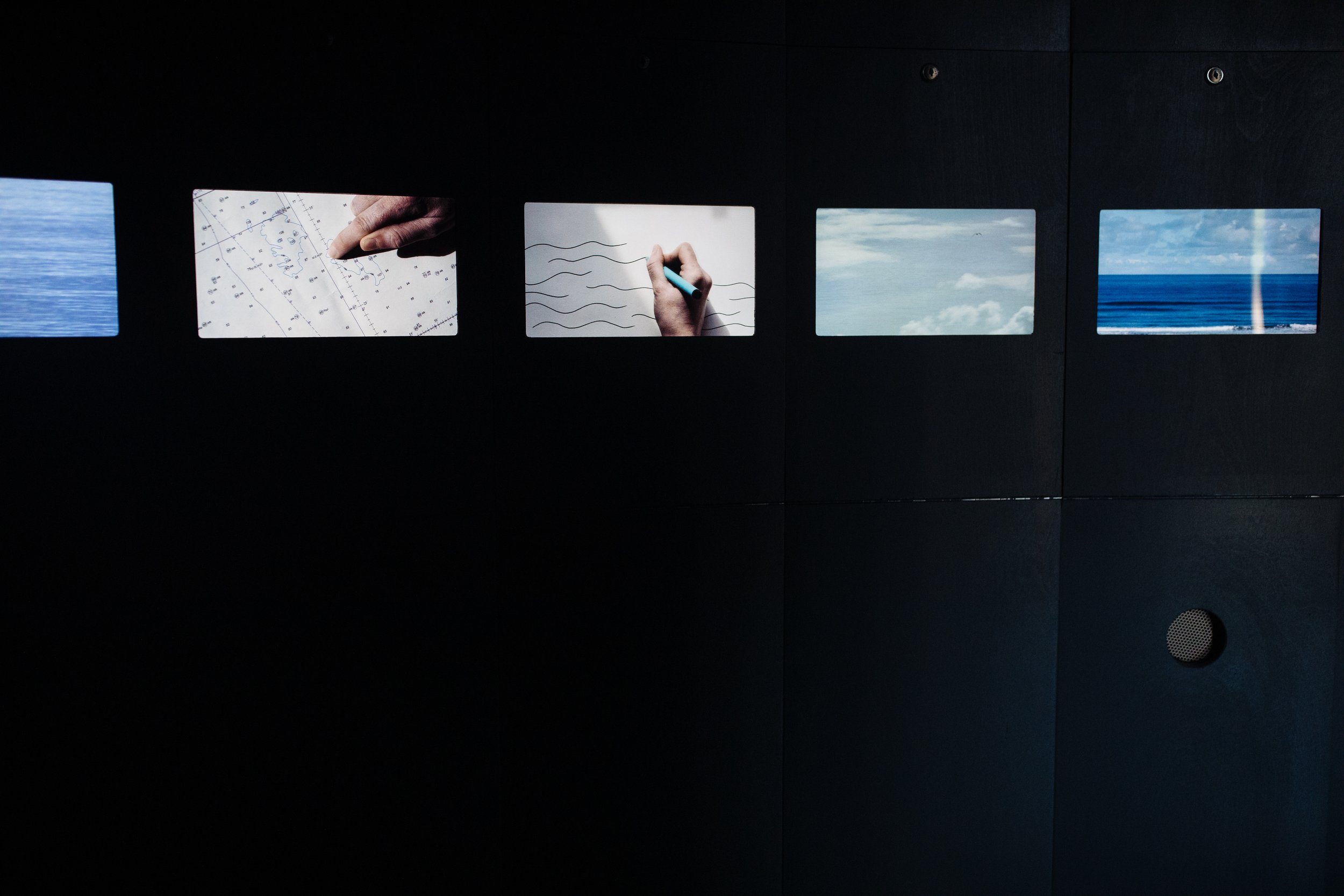
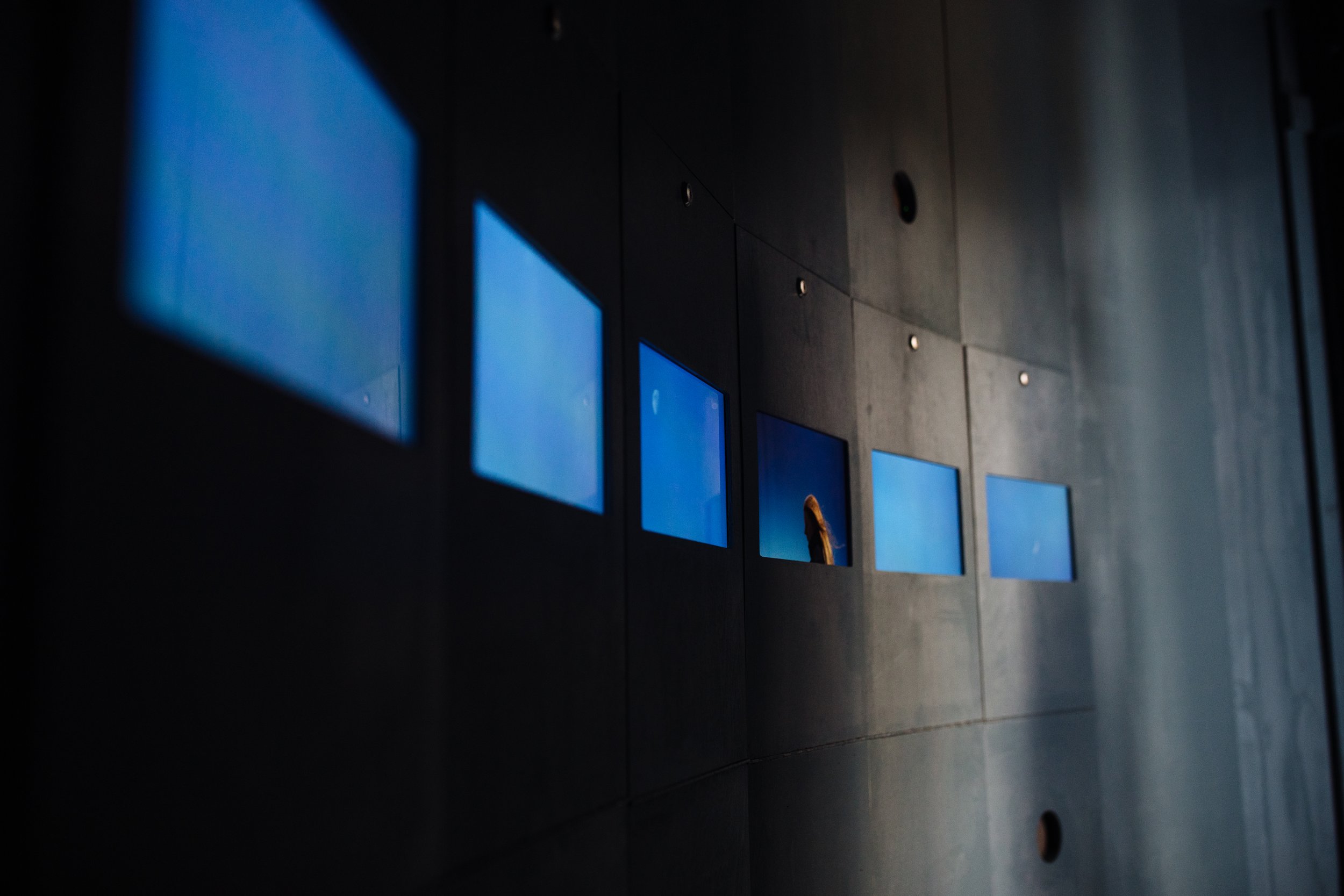
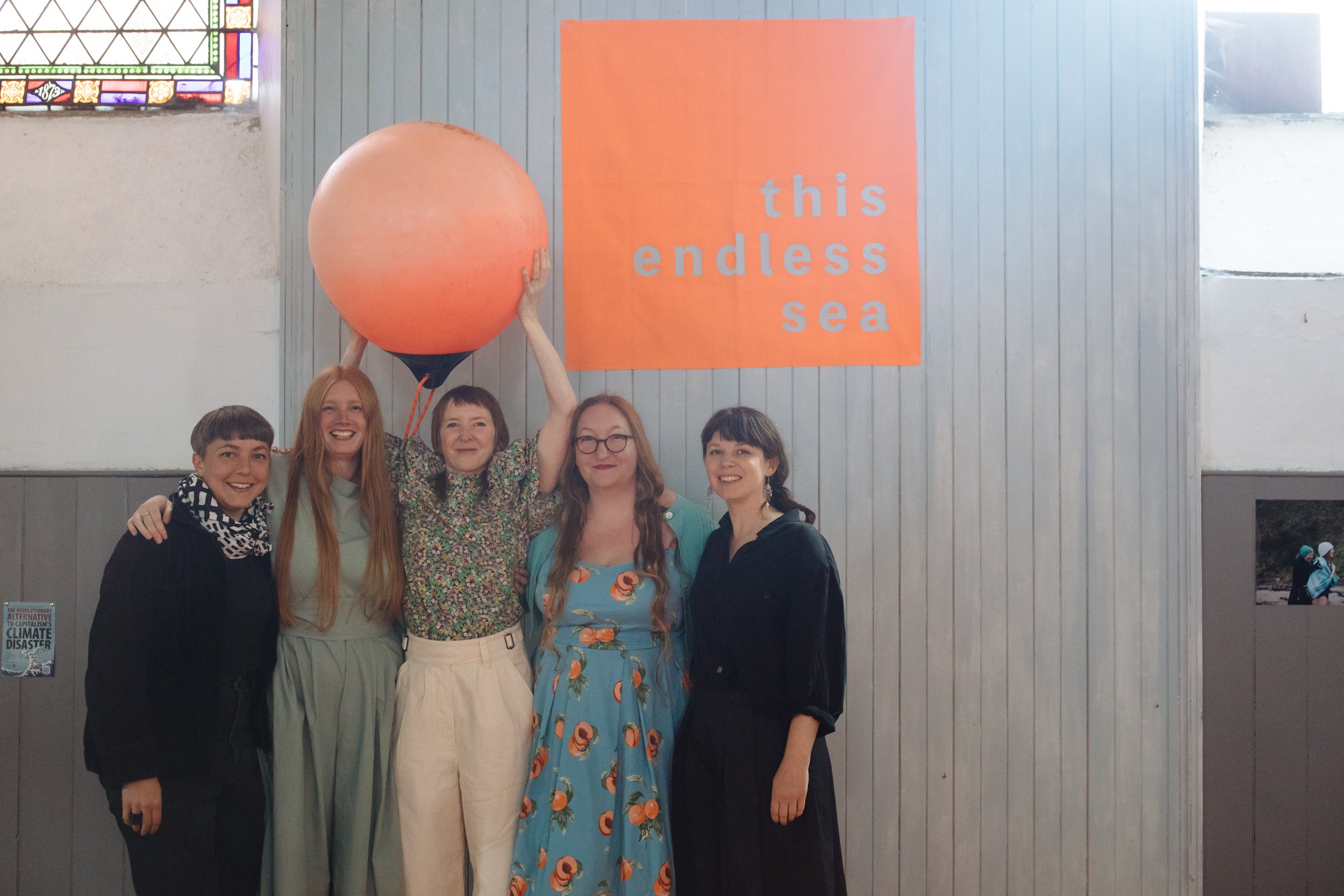



This Endless Sea 2022 (ongoing)If grief were a pattern, what kind of pattern would it be?
Lucy collaborated with lead artist and choreographer, Chloë Smith on a six screen moving image installation, composed by Kim Moore and housed inside a unique coastal shelter designed by Bethany Wells.
The shelter acts as a marker on the landscape, its bright orange flag visible from a distance - a vibrant invitation to come closer. Outside the hut, ‘hut keepers’ greet visitors and take care of each audience member’s experience ensuring that those viewing and listening to the work are undisturbed and that those waiting are invited into conversation and offered context for the work. This Endless Sea is an intimate experience for one or two people (or a family) at a time, and creates a space for people to gently reflect on their own experiences of grief and loss.
So far the work has been installed as a public art work for six weeks in Berwick-upon-Tweed (Aug - Sept 2022) ; and in Half Moon Bay, Heysham Lancaster (June 2023).
An especially adapted gallery version is part of a group exhibition in Limerick City Gallery Nov 9th 2023 - Jan 30th 2024.
Introduction to the work:
This Endless Sea was made with time and energy and tender determination which grew out of a personal experience of grief and loss. It was made where the loss took place: in Berwick-upon-Tweed, that northernmost part of England, a stone’s throw from the border with Scotland.
The process of making a film, with its sudden shifts of rhythm, its need for repetition and its responsiveness to light and weather provides a kind of net for what might often remain invisible or overlooked in the world around us.
If the net is carefully tended it can provide a democratic setting in which the movement of a hand can converse with a line of spoken text; a spotted burnet moth can remind us of summer, and their antennae touching a petal of how exquisitely delicate a contact can be. This quality of feeling extends to objects as well as animate beings, so the benign weightlessness of a buoy at sea can transform into something quite different when held by a pair of arms, on land.
This Endless Sea was only been able to become what it has through the kindness and attention of many people – people local to Berwick, people who know and care about Chloë Smith’s practice as a choreographer and maker and who provided all manner of unexpected gifts – lending camera parts and wetsuits; an ice cream van and a boat; gifting a lemon, green paper, a quilt (handmade) and a window with a sea view as well as the words included below by writer, Jessie Greengrass, who describes her experience of the first iteration of the work:
“The breakwater at Berwick stretches for half a mile, first into the mouth of the Tweed river and then, making a sharp turn, out into the north sea. On one side of it the estuary flows, its channel protected by the solid stone bulk of the breakwater, ending in its squat, red and white striped lighthouse. On the other side is a beach and, separated from the sand by a stretch of dune-like scrub, a small green. It was here, in the relative shelter of the breakwater’s wall, that This Endless Sea was first shown. It was also here that it was filmed, much of it only a few hundred yards away, in between the rocks and seaweed which show themselves as each tide falls.
Although the film forms the major part of the work, as it was originally conceived This Endless Sea comprised both the film and the hut in which it was shown. This was purpose built from plywood and designed to mimic costal architecture, its shape inspired by beach huts and by coastguard lookout towers. Inside, there was space for two adults or one small family – the intention was to create a space in which the films could be viewed privately, without the presence of strangers. There was no light source other than the screens themselves, and the effect was both intimate and cocooning. To enter the hut was to step into a space which was both within and apart, and in this way it became a corollary of grief itself. Sounds from outside filtered through its walls, damped down. The weather was present as heat, or as the sound of wind or of rain, which incorporated themselves into the film’s soundscape. On blowy days the sound of the weights rattling against the hut’s flagpole mimicked the sound of rigging, conjuring the image of harbours.
There is very little space, in contemporary British culture, for the idea of grief as anything other than transitory: a difficult terrain which must be crossed, as quickly as possible, so that our real lives can go on. The idea that grief as a state which ebbs and flows across a lifespan, and which offers the
possibility both of reflection and of transformation, is rarely explored – and yet the experience of loss is a fundamental one, and one that will come to all of us, in some form, at some time, again and again in waves throughout our lives. What This Endless Sea attempts to offer is a version of what grieving might look like, conceived as a process which is a part of living, and a place in which to experience it: the hut itself, safe and separate and close to the sea.“
Credits:
Lead Artist: Chloë Smith
Film Direction and Editing: Lucy Cash
Composition and Sound Design: Kim Moore
Producer: Charlotte Mountford and Luke Collins
Design: Bethany Wells
Mentor: Ellie Harrison
Photographer: Jassy Earl
Cinematographer: Ole Birkeland
Hut Fabrication: Matt Sykes-Hooban
Text and Process Support: Luke Pell
Field Recording: Pete Smith
